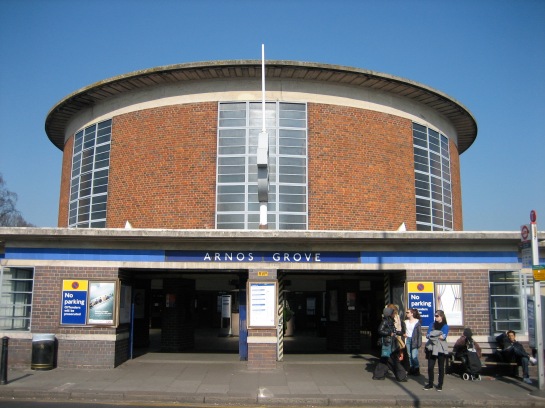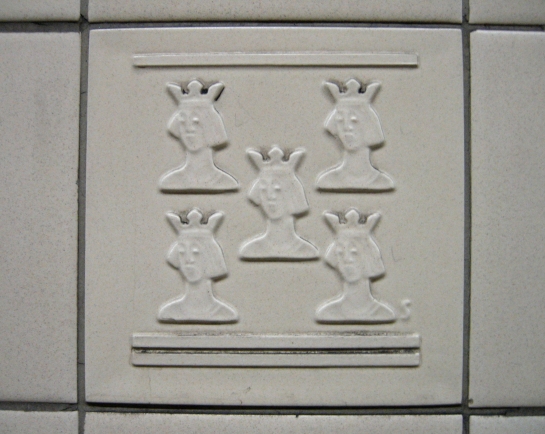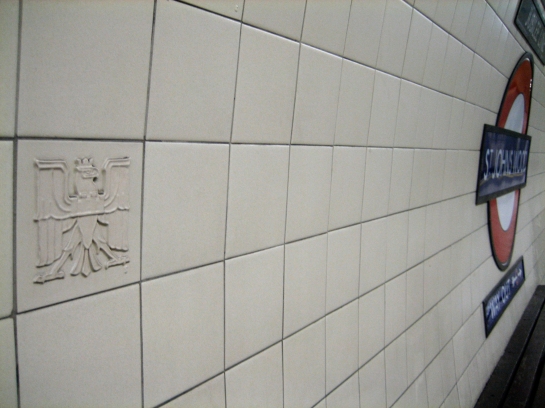 Peter York calls them “embassies of modernism”. Michael Gove calls them “prison houses of the soul”. I call the Piccadilly stations designed by Charles Holden one of the finest ensembles in the land. A bracing, lustrous orchestra of sensations. Their massed ranks of roundels, passimeters, turrets and Dalek stalks deployed in shimmering harmony, resonating up and down north London. A bit of bombast here, a bit of delicacy there, the odd cheeky homage thrown in for good measure.
Peter York calls them “embassies of modernism”. Michael Gove calls them “prison houses of the soul”. I call the Piccadilly stations designed by Charles Holden one of the finest ensembles in the land. A bracing, lustrous orchestra of sensations. Their massed ranks of roundels, passimeters, turrets and Dalek stalks deployed in shimmering harmony, resonating up and down north London. A bit of bombast here, a bit of delicacy there, the odd cheeky homage thrown in for good measure.
It’s an ensemble that can fizz as well as flutter, that whirls as well as soothes. And in the centre, keeping everyone else in time and in line, the thunderous, glorious magic drum that is Arnos Grove.
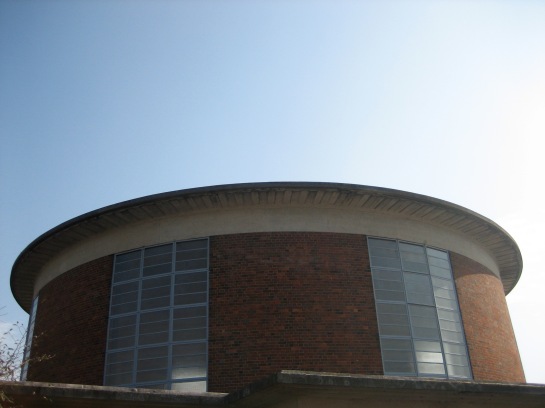 Apologies for the more-fanciful-than-usual wittering, but I don’t feel too steady on my feet. Because I’ve already bowed my head long and low to the wonder that is the interior of this station. How to pay equal tribute to the equally wondrous exterior? What more is there to say about Charles Holden, about whom I’ve been banging a drum for a good portion of the last 100 posts?
Apologies for the more-fanciful-than-usual wittering, but I don’t feel too steady on my feet. Because I’ve already bowed my head long and low to the wonder that is the interior of this station. How to pay equal tribute to the equally wondrous exterior? What more is there to say about Charles Holden, about whom I’ve been banging a drum for a good portion of the last 100 posts?
Well, one mark of Holden’s genius is that he always does have something new to say, and another mark is that he does so with such visually self-evident swagger. The only thing he can really apologise for is trying. And that’s more than can be said for most of us.
Arnos Grove looks like it has just tunnelled its way up from some kind of subterranean concrete Eldorado. It is like nothing on Earth (well, almost) yet somehow intensely familiar. The distinctiveness of the place attracts, rather than repels. You feel almost propelled towards it, like bathwater skipping its way down a plughole. It’s the opposite of being flung outwards by a centrifuge. It is this poster made real.
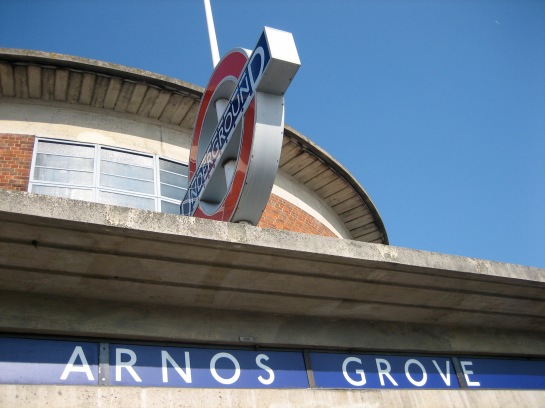 There are many, many Underground stations that can cheer, amuse and sometimes thrill me when I step inside. There are a few that go further – stations that bewitch and flatter. But there’s only one that revives me. That picks me up, no matter how deep I’ve sunk. That actually, in a very clumsy, reserved, hope-nobody’s-looking, British kind of way, lifts my heart.
There are many, many Underground stations that can cheer, amuse and sometimes thrill me when I step inside. There are a few that go further – stations that bewitch and flatter. But there’s only one that revives me. That picks me up, no matter how deep I’ve sunk. That actually, in a very clumsy, reserved, hope-nobody’s-looking, British kind of way, lifts my heart.
Beyond that, there’s really not much more I can say about Arnos Grove.
For when Charles Holden bangs the drum, there are no words to describe the way I feel.
